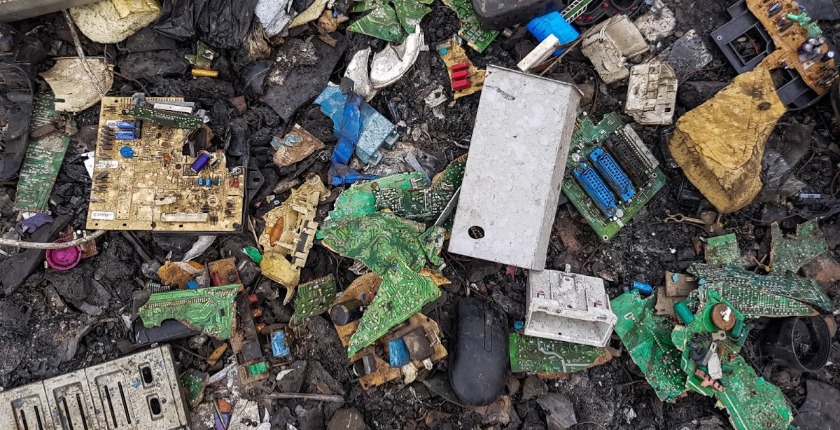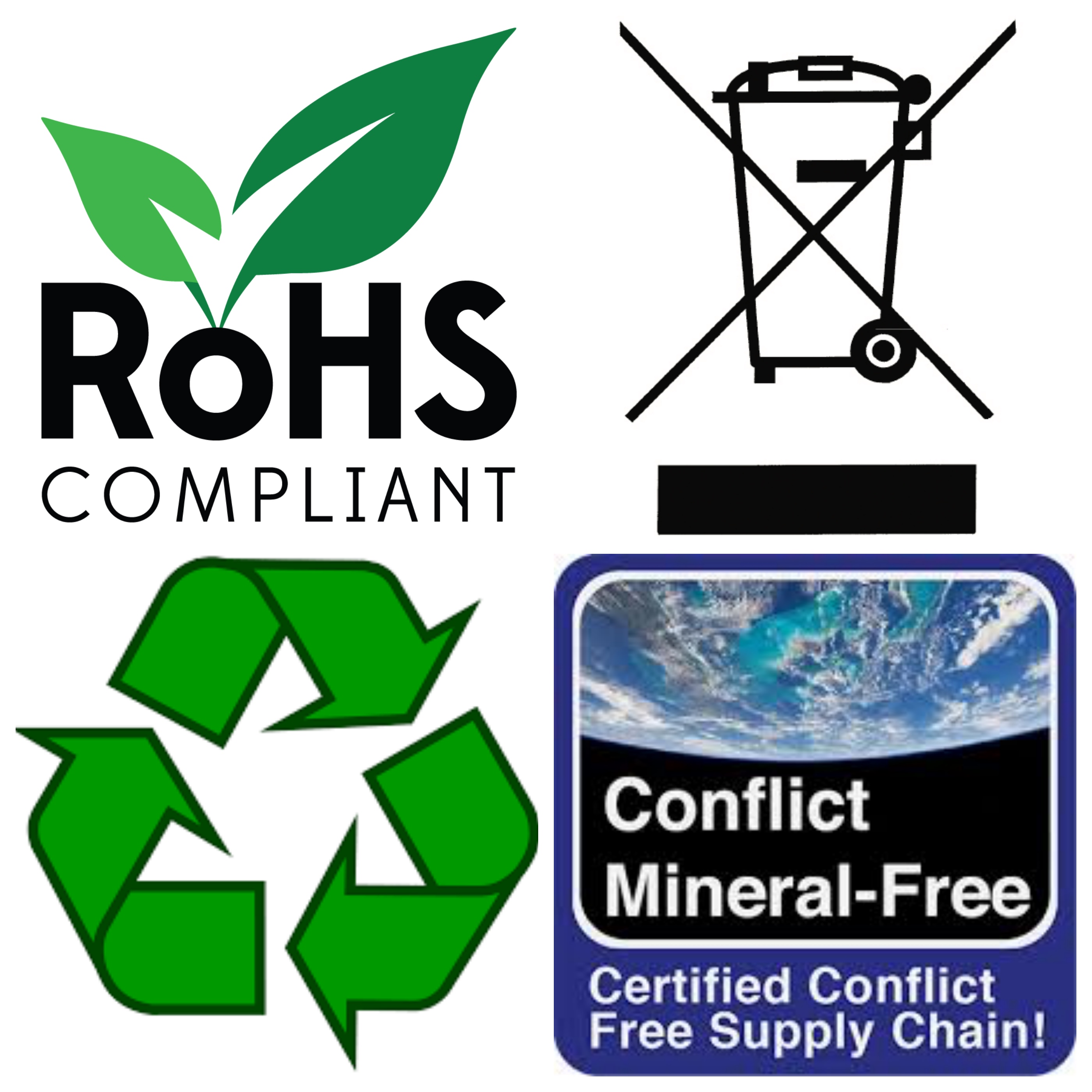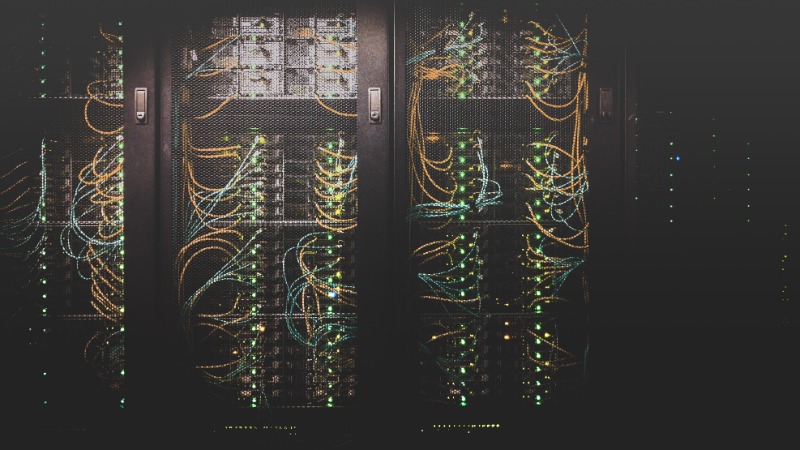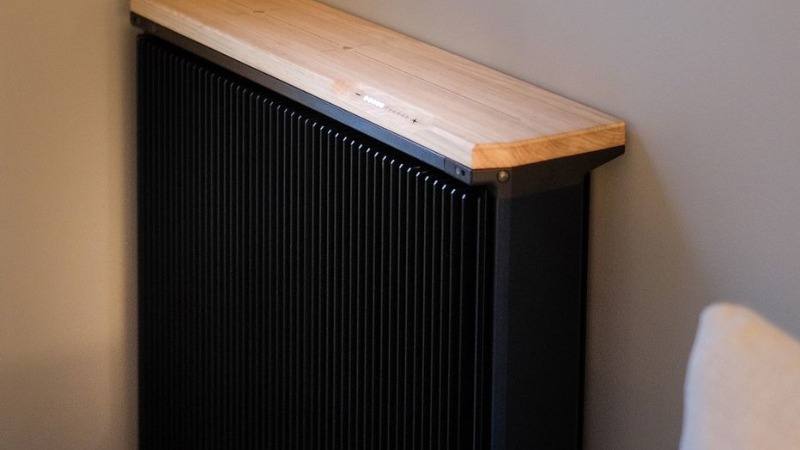Technical Article - May 14, 2019
How the world is dealing with its e-waste issue?


Written by Expert: Benjamin Demma 5 min read
Electronic circuits require the use of different raw materials, from copper for printed circuit boards and cables to plastic for component casing and insulators. But what are the social, environmental and economic consequences related to the procurement of these materials? This article aims to raise awareness of the main problems caused by these materials and their correct use and recycling.

Many different materials are used in electronic circuits, each with its own properties and characteristics. There are conductive materials, such as copper which is used in cables and printed circuit boards; lead and tin which are used in electronic components welding; gold that is used on contacts to prevent oxidation. There are materials used for electronic components, for example silicon that is used for the semiconductors (integrated circuits, transistors, ...); tantalum that is used in electrolytic capacitors; lithium that is used in rechargeable batteries. There are plastic and other petroleum-derived materials, used in particular for their insulating properties and heat resistance. For example Polystyrene, Polyethylene Terephthalate (PET) and Polyvinyl Chlorate (PVC) used for component casings.
All these materials are derived from raw materials that must be extracted from mines or oil fields. But what does this mean? Below is a list of the main social, environmental and economic problems related to the procurement of these raw materials.
Miners health and safety
Mining activities have negative impacts on the health of miners. Inhalation of chemicals and dust and direct contact with heavy metals leads to diseases that can cause death.
Some of the mining processes are very dangerous and can cause accidents (explosions, collapses) that can injure or kill miners.
Contamination of soil and water
Improper disposal of water used during the extraction process leads to contamination of surrounding water sources. The toxic substances present in the wastewater contaminate the surrounding soil. People and animals that draw on contaminated water or feed on plants from contaminated soils are also contaminated with serious health risks.
Energy consumption
Energy is used in all stages of production of primary metals (mining, chemical extraction). The energy is used directly in the process or indirectly for the creation of what is needed for the process (reagents). The sum of the direct and indirect energy of the entire production process is the embodied energy of the metal. The embodied energy of the common metals varies widely, from about 20 MJ/kg for Lead and Steel to over 200 MJ/kg for Aluminium. The phases of chemical transformation are those that consume the most energy.
Conflict minerals
The conflict minerals are minerals extracted in a conflict zone and sold to perpetuate the fighting. Access to valuable assets can finance and therefore prolong conflicts.
The most important contemporary example are the eastern provinces of the Democratic Republic of the Congo, where various armies and rebel groups profit from mining by contributing to violence and exploitation during wars in the region. The four conflict minerals most commonly extracted are Cassiterite (for Tin), Wolframite (for Tungsten), Coltan (for Tantalum) and Gold. These minerals are essential in the production of electronic equipment.

What can be done to counter these problems? Here are some actions taken to counter these issues.
RoHS Directive
The RoHS Directive (Restriction of Hazardous Substances Directive) adopted in 2003 by the European Community, places restrictions on the use of the following six substances:
- Lead
- Mercury
- Cadmium
- Hexavalent chromium
- PolyBrominated Biphenyls (PBB)
- PolyBrominated Diphenyl Ether (PBDE).
These substances are toxic and therefore dangerous to health, but are commonly used in the electronics industry.
Lead is used on electronic components welding; Mercury in certain switches and thermostats; Cadmium in some types of batteries and semiconductors; Hexavalent Chromium for protection against corrosion and wear of certain surfaces; Polybrominated Biphenyls and Polybrominated Diphenyl Biphenyls are added to the plastic polymers to obtain fireproof properties.
The purpose of this directive is to limit the maximum concentrations of these substances to 0.1% (except for Cadmium which is limited to 0.01%) of the material weight.
WEEE Directive
The WEEE directive (Waste of Electric and Electronic Equipment) adopted in 2012 by the European Community is closely linked to the RoHS directive, and regulates the management of electrical or electronic waste (E-waste). The main problems deriving from this type of waste are the presence of substances considered to be toxic for the environment and the non-biodegradability of these devices. These products must be treated correctly and destined for the differentiated recovery of the materials of which they are composed, such as Copper, Iron, Steel, Aluminium, Glass, Silver, Gold, Lead, Mercury, thus avoiding a waste of resources that can be reused to build new equipment.
The recovery treatments are performed in order to be able to separate the components from materials that are hazardous to health or the environment and to dispose them correctly. This allows to proceed with the recovery of all reusable components (which can be reassembled in regenerated products) and all recyclable materials, and ultimately the properly disposal of non-recyclable materials.
Raw material recycling
The recycling of raw materials, in addition to avoiding the waste of resources that are not infinite, also allows for significant energy savings. Copper, for example, which is a metal that can be infinitely recycled without losing its characteristics, to be extracted from the mine and refined, needs about 30 MJ/kg of energy. To recycle one kilogram of copper, starting from “waste” Copper, requires only 15% of the original energy, which is about 4.5 MJ/kg.
Conflict minerals norm
In 2021, the regulation on minerals coming from conflict zones will come into force in the European Community. Its purpose is to help counter the trade of four minerals (Tin, Tantalum, Tungsten and Gold), which sometimes finance armed conflicts or are extracted by resorting to forced labour.
The regulation aims to:
- Guarantee the responsible supply of these materials
- Helping to break the link between conflict and illegal exploitation of minerals
- Contribute to ending exploitation and abuse of local communities and supporting local development.
The regulation requires European companies operating in the supply chain to ensure that they import the minerals and metals affected by the regulation exclusively from responsible sources.
Conclusions
The supply, use and disposal of materials used in electronics are complex problems with social, environmental and economic consequences. Something has been done; rules and directives are issued to reduce the negative effects.
Much remains to be done, starting with the awareness of the importance of recycling of raw materials to the research of new and more sustainable replacement materials.
References
- European Commission. “Raw Materials Information System (RMIS)”
- John Rankin (2012). “Energy Use in Metal Production”. CSIRO, Process Science and Engineering, Australia
- European Copper Institute. “Benefit of copper recycling”.
- European Commission. “The RoHS Directive”.
- European Commission. “Waste Electrical & Electronic Equipment (WEEE)”.
- European Commission. “Combatting Conflict Minerals”

Written by Expert: Benjamin Demma on May 14, 2019


